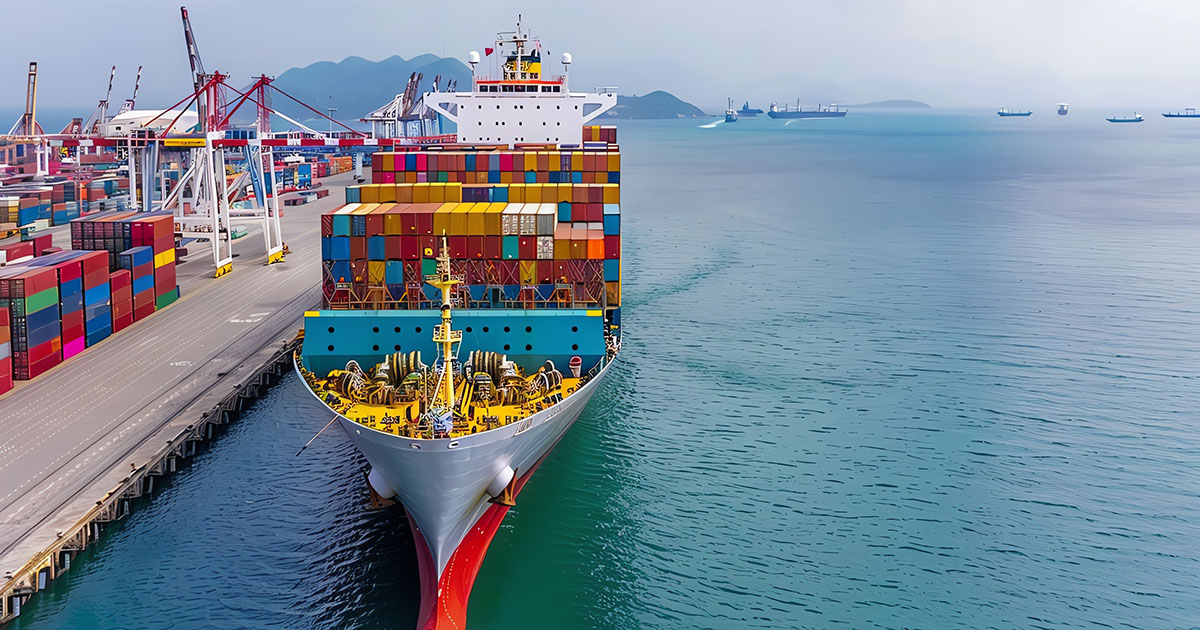Tariffs Explained: What They Do, Why They Matter, and Who They Impact

As talk of tariffs, global trading, and domestic industry dominate the headlines, we asked Babson College Associate Professor of Economics Joshua Stillwagon to help break down the basics behind this international trade tactic—what are tariffs, why are they implemented, and who do they impact?
What Are Tariffs?
“Tariffs are basically a tax on imported goods,” Stillwagon said. Tariffs can take various forms, such as a percentage of the imported goods’ value or a fixed fee per unit. While tariffs have been used for centuries, their effectiveness and economic consequences remain debated among economists and policymakers.
“Although economists are generally negative on tariffs, targeted tariffs for certain consumer products could be rational in the short term to prevent ‘dumping’ by other countries, which may threaten the existence of our domestic industry,” Stillwagon explained.
Dumping occurs when a company sells a product in another country at a lower price than in its home market.
Why Implement Tariffs?
Governments impose tariffs for multiple reasons, said Stillwagon, who also serves as chair of Babson’s Economic Division. The primary motivations include:
Protecting Domestic Industries
One of the most cited reasons for implementing tariffs is to encourage domestic production by making imported goods more expensive. This can increase demand for locally produced alternatives, boosting profits and growth in the protected industry, at a cost to consumers.
Stillwagon noted that their effectiveness depends on how they are structured.
“If you want to boost production in the U.S., it’s better to have a more targeted approach,” Stillwagon cautioned. “Broad tariffs on essential materials like steel and aluminum increase costs for numerous industries, which would ultimately harm economic growth.
Generating Government Revenue
Tariffs can serve as a source of income for the government, as companies importing goods must pay taxes upon entry. However, if tariffs significantly reduce imports, the revenue generated from them may diminish over time.
Trade Negotiation Leverage
Tariffs can be used as a bargaining tool to encourage foreign governments to reduce their own tariffs or eliminate unfair trade practices, such as subsidies that allow foreign industries to sell products at artificially low prices in global markets.
“The best argument for our tariffs is to use them as leverage to get other countries to remove their own tariffs or unfair trade practices,” Stillwagon said.
Who Do Tariffs Impact?
While tariffs are designed to protect domestic industries, their effects can be widespread, Stillwagon said. The key groups affected by tariffs include:
Domestic Companies
Competition from imports can hurt domestic companies, leading to layoffs or shipping work overseas to cut costs. The recent 25% tariff imposed on foreign steel and aluminum will help U.S. steel and aluminum industries, for example.
Infant Industries
This type of tariff helps to foster growth in new or young industries “until they are more established and viable in the face of international competition,” Stillwagon said. For example, a country that imports cars might impose tariffs while they create a domestic auto industry.
Importing Firms and Industries
Companies that rely on foreign materials or components face increased costs due to tariffs. For example, U.S. businesses that source steel, aluminum, or auto parts from abroad must pay additional taxes when these goods cross the border.
“Tariffs on ‘upstream inputs’ like steel and aluminum will raise production costs for all the industries that need those materials,” Stillwagon said. “This will have some effect on raising inflation and reducing GDP growth compared to otherwise.”
Consumers
As importing businesses pass on tariff-related costs, consumers often experience higher prices on everyday goods. This is especially true for essential items that are perishable or can’t be substituted, such as food and fuel.
Retaliatory Tariffs and Economic Uncertainty
When a country imposes tariffs, affected trading partners may respond with their own tariffs on exported goods. In 2018, China, Canada and the EU responded by targeting politically-important sectors like American agricultural products, impacting U.S. farmers and food producers. Retaliatory tariffs can shrink export markets, leading to lower sales and potential job losses in affected industries, Stillwagon said.
Another consequence of the tariffs is heightened economic uncertainty, which may cause businesses to delay investments and expansion.
“Economic uncertainty discourages business investments,” Stillwagon noted. “Recent GDP data already show weak investment as a drag on growth. Without clear trade policies, companies may delay expansion.”
Posted in Insights





